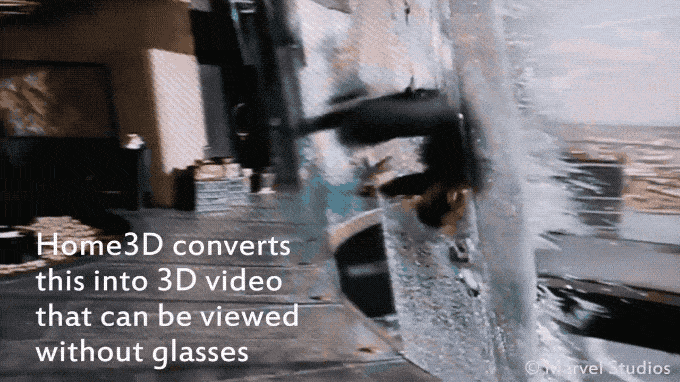Imagine a movie night where you can dive into the action without the distraction of cumbersome 3D glasses. Thanks to groundbreaking work led by the MIT Computer Science and Artificial Intelligence Lab (CSAIL), this could soon be a reality for home entertainment enthusiasts. The advent of their innovative Home3D technology promises to breathe new life into 3D cinema, making it more accessible and enjoyable for everyone.
What is Home3D?
Home3D is an innovative conversion algorithm designed to display 3D movies on automultiscopic displays without the use of glasses. Unlike traditional methods that require specialized 3D content, Home3D can convert existing stereoscopic films to a compatible format, making it a game-changer in the home theater market.
The Technical Marvel Behind Home3D
The brilliance of Home3D lies in its sophisticated use of both phase-based rendering and depth image-based rendering techniques. This dual approach enables the algorithm to effectively manage scenes with significant depth differences between left-eye and right-eye images without sacrificing resolution. The result? A viewer experience that is as close to reality as possible, without the discomfort of wearing glasses.
Real-Time Conversion and Customization
- Real-Time Processing: Home3D runs efficiently on popular gaming GPUs such as those found in Xbox One and PlayStation 4.
- Depth Customization: Viewers can personalize the depth effect to fit their comfort levels, enhancing immersion while reducing eye strain.
Implications for the Home Theater Market
The arrival of Home3D comes at a time when 4K and higher resolution displays are becoming increasingly common. While these advancements offer diminishing returns for standard 2D content, they significantly enhance the ability to render 3D images with greater detail and vibrancy. This development presents a unique opportunity for both TV manufacturers and movie studios to embrace 3D content as a fundamental part of the home entertainment experience.
Potential Reach and Future Applications
One of the most exciting aspects of Home3D is its potential for broader application. The algorithm could run on chips integrated into smart TVs, Blu-ray players, or even streaming devices like Google Chromecast. This versatility not only simplifies user access to 3D content but also opens the door for broader adoption among consumers traditionally put off by glasses-based 3D presentations.
Challenges Towards Commercialization
While Home3D signifies a pivotal stride towards popularizing glasses-free 3D at home, commercialization is still a few steps away. Market readiness, consumer perception, and potential adoption by content producers remain essential factors that will shape the path to making this technology a household staple.
The Future of 3D Movies and Home Entertainment
As we envision the future of cinema, the blend of comfort and cutting-edge technology stands to redefine the viewer experience. MIT’s Home3D initiative is not merely a technical achievement; it represents a vision for a more immersive and enjoyable cinematic landscape at home. By eliminating the drawbacks of traditional 3D viewing, we can pave the way for a renaissance of 3D films, engaging audiences in ways previously imagined only in sci-fi movies.
At fxis.ai, we believe that such advancements are crucial for the future of AI, as they enable more comprehensive and effective solutions. Our team is continually exploring new methodologies to push the envelope in artificial intelligence, ensuring that our clients benefit from the latest technological innovations.
For more insights, updates, or to collaborate on AI development projects, stay connected with fxis.ai.

